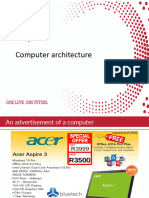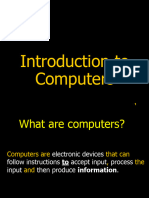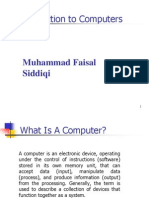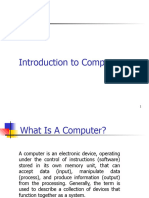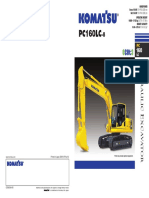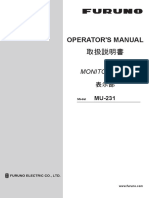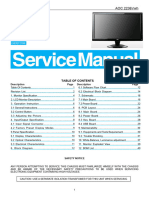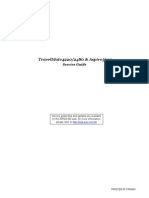0% found this document useful (0 votes)
19 views60 pagesIT1016 Lesson3
The document provides an overview of computer architecture, detailing the components that make up a computer system, including the CPU, memory, and input-output devices. It explains the functions of these components and their interactions, such as the fetch-execute cycle and the role of buses in data transfer. Additionally, it covers various types of storage, including RAM, ROM, and external memory devices.
Uploaded by
phuonganh211299Copyright
© © All Rights Reserved
We take content rights seriously. If you suspect this is your content, claim it here.
Available Formats
Download as PDF, TXT or read online on Scribd
0% found this document useful (0 votes)
19 views60 pagesIT1016 Lesson3
The document provides an overview of computer architecture, detailing the components that make up a computer system, including the CPU, memory, and input-output devices. It explains the functions of these components and their interactions, such as the fetch-execute cycle and the role of buses in data transfer. Additionally, it covers various types of storage, including RAM, ROM, and external memory devices.
Uploaded by
phuonganh211299Copyright
© © All Rights Reserved
We take content rights seriously. If you suspect this is your content, claim it here.
Available Formats
Download as PDF, TXT or read online on Scribd
/ 60

